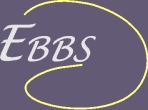|
|
Neural representation
of objects in the Inferior Temporal cortex |
Dr. Pietro Berkes & Dr. Yasser Roudi (Gatsby Computational Neuroscience Unit, London, UK.)
|
Inferior Temporal (IT) cortex plays a major role in visual object
recognition, and thus is crucial for visual processing in the brain. A
critical first step in understanding the underlying computational
principles in IT is understanding how visual information is coded by
neuronal activity. Central questions in current research include the
representation of multiple objects, the distributed/single-neuron
nature of the code, and the relation between neural activity and
perception (are shapes that are perceived as similar represented
similarly in IT?). Another key issue concerns invariant representation:
what is the degree of invariance of neuronal responses to changes in
object attributes and shape, and how is this invariant representation
learned?. These questions are difficult to answer because they depend crucially on hard-to-control factors such as previous visual experience and degree of attention. Nevertheless, over the past several years there has been considerable experimental and theoretical progress in answering them. The symposium includes contributions by researchers discussing these issues from experimental and theoretical view points and presenting recent progress made in the field. |
- Rufin Vogels: Representation of perceived shape similarity in macaque inferior temporal cortex.
- James J. DiCarlo: The role of visual experience in supporting invariant visual object representations in primate Inferior Temporal cortex.
- Edmund T. Rolls: Neurophysiological and information theoretic analyses of object and face representations in the Inferior Temporal visual cortex, and a computational theory of how they are formed.
- Laurenz Wiskott:
Is slowness a learning principle of the visual system?
